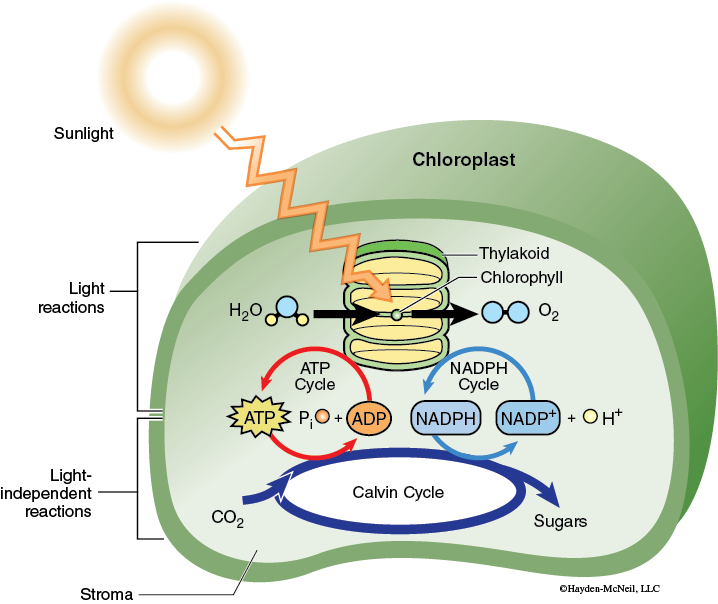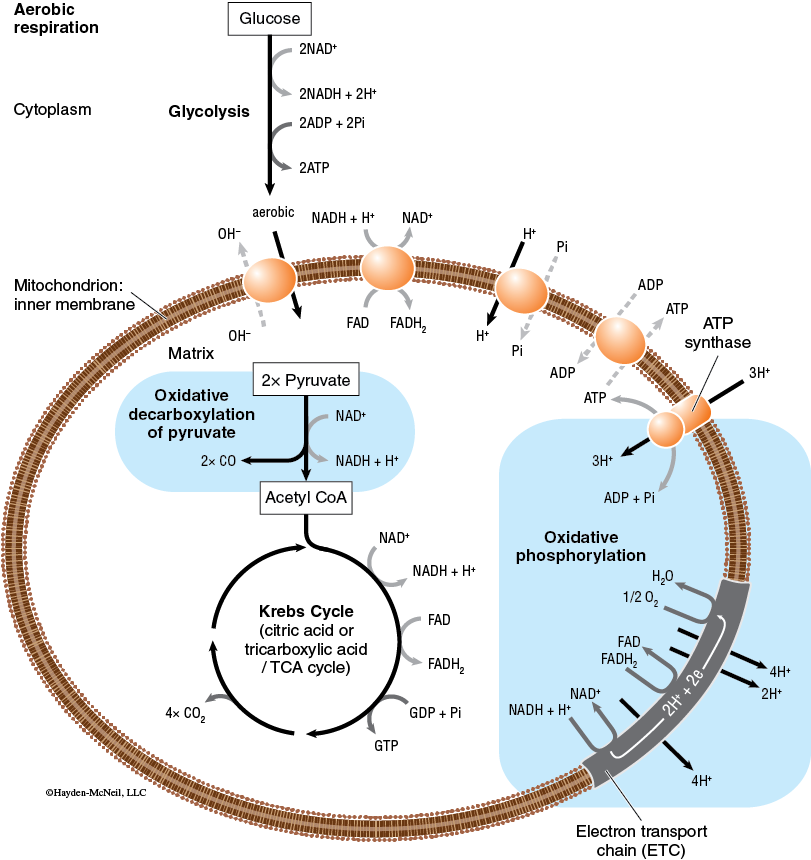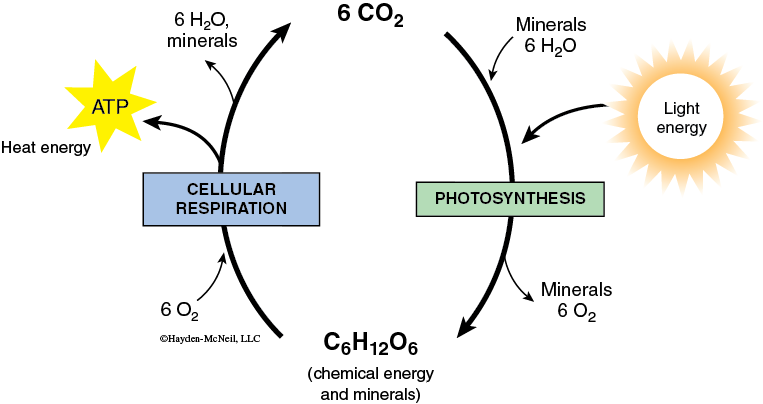Chapter 2. Carbon Metabolism: Rate of Photosynthesis and Cellular Respiration
General Purpose
This pre-lab will present some of the general concepts related to the measurement of the rates of photosynthesis and cellular respiration.
Learning Objectives
General Purpose
- Understand the meaning of net photosynthesis
- Understand the meaning of net cellular respiration
- Understand the relationship between CO2 level and solution pH
Background Information
The light-absorbing reactions you studied in the previous lab are just a part of the process of photosynthesis. The energy from absorbed light is initially used to synthesize ATP and NADPH (Figure 8-1). The light absorbing pigments harvest the light energy form different wavelengths of light to power the reactions of photosynthesis.

The ATP and NADPH from the light reaction are used, at least in part, to chemically reduce carbon from CO2 to produce sugar during the Calvin cycle.
Plant cells are also able to do the reactions of cellular respiration (a.k.a. aerobic respiration) (Figure 8-2).

During cellular respiration the carbon atoms of organic molecules, like glucose, are oxidized to produce CO2 and the energy that results is used to produce various energy rich compounds (ATP, GTP, NADH + H+, FADH2). Therefore in a plant cell at any given time there are both CO2 producing and consuming reactions that can be occurring at different rates (Figure 8-3).

This means that if CO2 production is higher than CO2 consumption, then the excess CO2 will be released into the environment. If however the consumption of CO2 exceeds the production of CO2 within the cell, then additional CO2 from the environment will be required.
Any measurement of photosynthesis rate which is based on CO2 consumption is measuring the net photosynthesis rate. This is the rate of CO2 used by photosynthesis minus the rate of CO2 generated by cellular respiration. The same aspects apply to any measurement of cellular respiration rate which is based on the CO2 production. That is the rate of CO2 produced by cellular respiration minus any CO2 used up by photosynthesis.
Pre-Lab Quiz
Proceed to the Pre-Lab Quiz